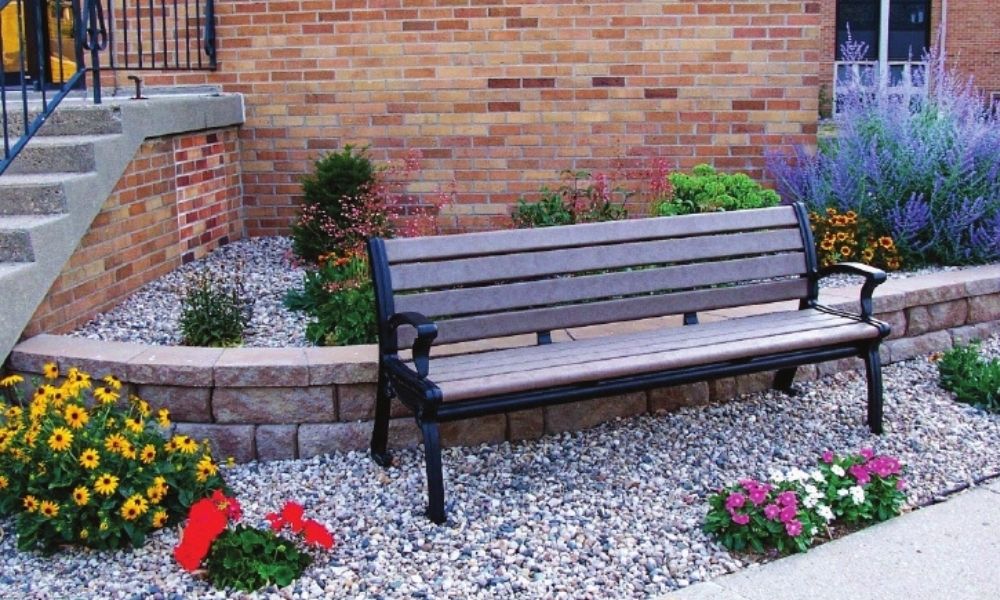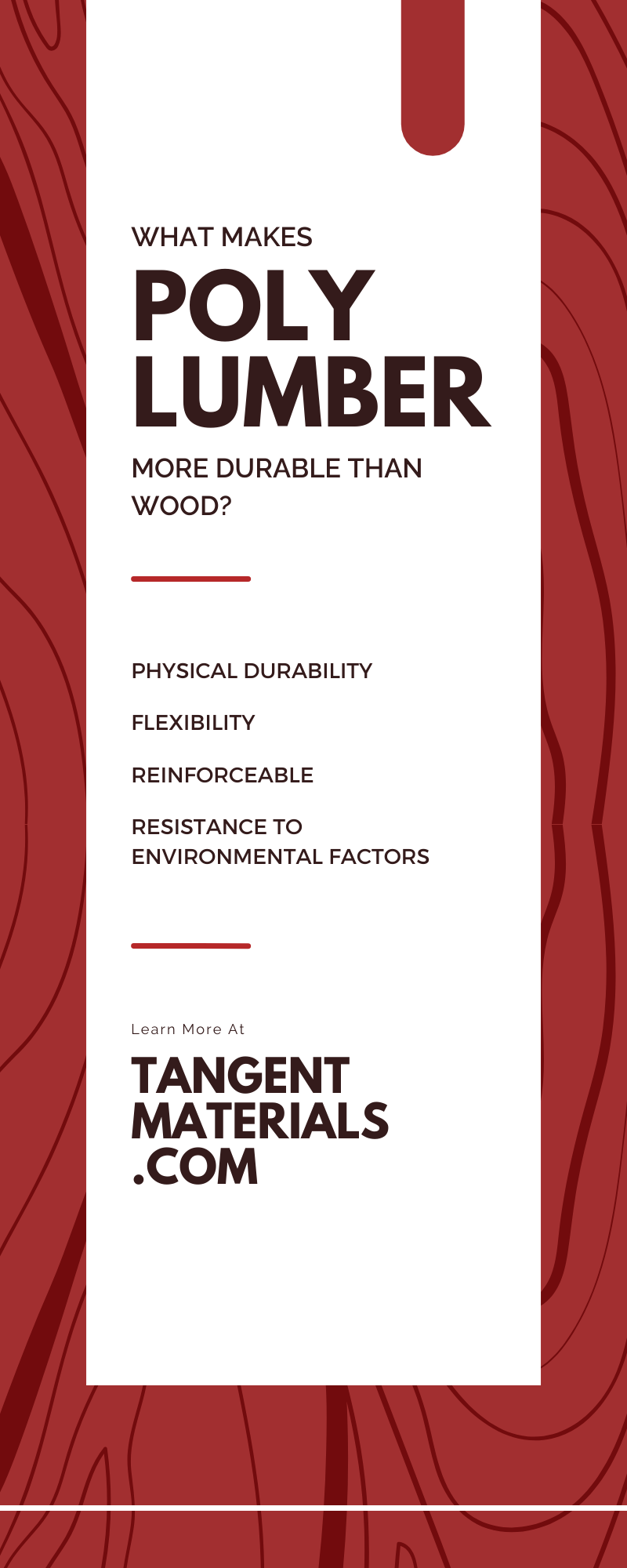What Makes Poly Lumber More Durable Than Wood?

Human beings have been using wood to build houses and other structures forever. Wood has always been an accessible material and easy to manipulate for a variety of uses. And more than anything, it’s an incredibly durable material for use in homes.
However, just because wood has long been the traditional choice when it comes to building doesn’t mean it’s the only choice. HDPE (High-density polyethylene) plastic “poly” lumber has quickly gained recognition for the fact that it may outperform wood as far as durability goes. Poly lumber durability outlasts wood years later. Read on to learn more.
Poly Lumber Durability
Anyone who has ever used plastic knows that it is difficult to break the way you could easily break paper or glass. This is partially due to the molecular nature of plastic. Plastic is made up of covalent bonds known as carbon-to-carbon bonds. These bonds are notoriously difficult to break, making plastic a highly durable substance.
On the other hand, wood’s carbon atoms are bonded to cellulose molecules. While this is still a sturdy bond that isn’t likely to break, it is easier to disrupt than the carbon-to-carbon bonds of plastic.
Flexibility
Typically, when one thinks of something that is durable, they think of something that is hard and unyielding—not something that’s flexible. However, flexibility is one essential attribute that gives poly lumber more durability over wood.
Flexible materials are able to take a hit and bend with the strike without breaking. Wood, as durable as it is, is more likely to be brittle than plastic. That’s why it’s more feasible to break a wooden board with your bare hands or feet than it is to break a board made of plastic.
Reinforceable
Wood’s durability is all dependent on the tree itself. It can only be as durable as it is when you chop down the tree. A company can do things like treat the wood to help prevent the structure from being damaged, but this doesn’t necessarily make the wood any stronger than it already was.
On the other hand, companies can manufacture plastic with reinforcements built in to make it more durable for your purposes. For instance, some varieties of plastic lumber contain fiberglass rebar inside, which helps to reinforce it for industrial uses. Or companies can choose ones with fiberglass strands built in for a different form of reinforcement.
Resistance to Environmental Factors
Imagine you have two materials of equal strength. You take both materials and expose them to a series of harsh conditions, such as fire and water. In the end, material A is still in good condition, but material B is no longer structurally sound.
Even though both materials began with the same strength, their usefulness depends on their ability to stand up to environmental factors. And across the board, poly lumber is better able to stand up against these kinds of factors.
Water
Water is essential for sustaining life, yet it’s one of the more destructive forces on the planet. Water can corrode metal, wash away homes, and even carve canyons out of mountains. And water can greatly damage wood as well.
Because wood is a porous substance, it tends to absorb water when it is exposed to it. While this is good for trees, it can cause lumber to warp, grow mold, and potentially accelerate the onset of rot. The only way to avoid this is to treat the wood with harsh chemicals to waterproof it.
Plastic, on the other hand, is entirely waterproof without the need for any additional surface treatment. In other words, poly lumber durability is optimal for outside purposes like fencing and marine piling without the rain or waves affecting it.
Temperature
As wood absorbs water, it becomes more susceptible to physical changes during temperature extremes. In extremely hot temperatures, especially ones with high humidity, wood tends to expand. And during extreme cold, the wood tends to shrink. This can impact the integrity of wooden structures.
While plastic can be impacted by extremely high temperatures, high-quality HPDE plastics are not impacted by temperatures lower than 400 degrees Fahrenheit. So a sweltering summer day is not too hot for your building materials, fencing, outdoor furniture, or cribbing.
Rot
All living things decay eventually. But certain factors can speed up that process. In wood, the presence of fungus is one of those factors. Unlike mold or mildew, the types of fungi that cause rot produce destructive enzymes that eat away at wood, leading to decay. One of the primary causes of fungal growth is water exposure.
Because poly lumber is waterproof, it is far more resistant to the development of mold. And even if mold does appear on it’s surface, it is easily removable and can usually be cleaned off with soap and water. The enzymes in fungus that cause rot also do not typically impact poly lumber in the same way that they would impact traditional wood.
Pests
Many homeowners can relate to having pest infestations in the wood of their home. And the same insects that can cause damage to wooden walls, support beams, and furniture in houses can affect other types of wooden structures. A few of these species include:
- Termites
- Carpenter bees
- Carpenter ants
- Wood-boring beetles
- Powder-post beetles
These insects can damage the structural integrity of wood, depleting its durability. The only way to avoid these pests is to treat the wood with chemicals. However, these chemicals can have an adverse effect on human health as well as the surrounding environment. Naturally, since these insects are only attracted to wood, they do not pose the same threat to plastics.
Uses of Poly Lumber
Because of its durability, it has come to replace wood for a variety of purposes. A few common uses of poly lumber include, but aren’t limited to:
Whether you are looking to use poly lumber for commercial or residential purposes, Tangent Materials has the HDPE poly lumber you need to make your building project a reality.













